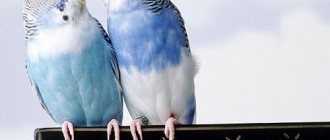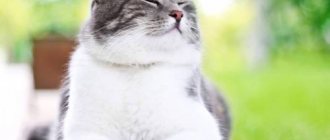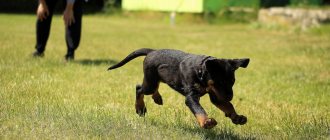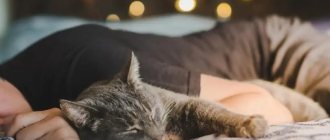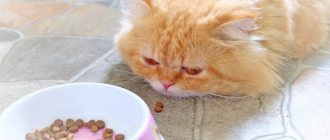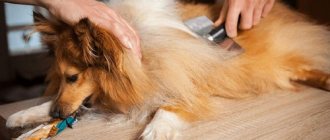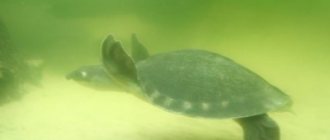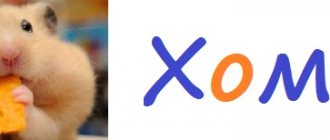- home
- Parrots
- Parrot diseases
- fractures in parrots
Parrots that fly freely around the apartment can accidentally damage their legs and wings, for example, by unexpectedly falling off any smooth surface.
For fractures of the lower leg, which are usually without displacement, you can limit yourself to applying a bandage directly to the limb or fixing the lower leg in its normal position, taping it to the body with an ordinary adhesive plaster, wrapped around the body directly on top of the bird’s feathers. Closed fractures of the tarsus of parrots can also be fixed in this way, however, with an open fracture of the tarsus, you must contact a veterinarian.
When fixing the damaged wing with a plaster, wrapped around the body in order to impart the necessary immobility to the broken limb, the ends of the primary feathers opposite the wings should be tied.
Victim of curiosity
Most often, a parrot's broken leg is the result of its curiosity. Sociable and sociable birds, parrots always strive to follow their owner. Getting carried away, following (flying) on the lead of their curiosity, they may not see something, not calculate it and pay for their inattention with a fracture. Consider a broken leg, which is quite common among feathered pets.
Doctors note that their fractures can be traumatic - as a result of traumatic factors, external influences, and pathological - changes due to pathological processes (osteoporosis, tumors, etc.).
Problems from osteoporosis
When a bird's diet is unbalanced, there is an acute lack of calcium in the body and bone tissue becomes brittle. Osteoporosis affects more than just the limbs. The beak and claws decompose, the bones of the chest are deformed. It is believed that lovebirds are most susceptible to this disease.
You need to be wary if your pet has frequent fractures and pay attention to its diet. The parrot should have a mineral stone in its cage, which it will definitely peck at if there is a lack of trace elements.
Disorders of calcium metabolism are easily detected by veterinary specialists. Once measures are taken to enrich the diet with calcium supplements, the bird’s health will noticeably improve.
Signs of a broken paw
The following signs are characteristic of a fracture: mobility of the bone where there is no joint; If the fracture is intra-articular, then it is difficult to diagnose it without x-rays. Very often, when a fracture occurs, the surrounding tissues also suffer, and at the site where this happened there is a hematoma, redness - if it happened recently, blue or green discoloration - depending on how long ago it was. To exclude errors in diagnosis, an x-ray is necessary. For an experienced doctor, palpation is enough to diagnose a fracture, but x-rays are still more reliable.
How to eliminate the problem of nutritional deficiencies?
Severe paw injuries are much less common than the consequences of poor nutrition. As soon as it is noticed that the pet has become sad and begins to sort out the food offered, you need to think about switching to higher quality food. Mixtures for birds from domestic and “Lubimchik” have proven themselves well.
To replenish calcium and vitamin D reserves in your pet’s body, you need to purchase special vitamin complexes for birds at a veterinary pharmacy, for example, Vinka, Vita-Sol, Multi-Drops. Such drugs are given to the parrot for at least 14 weeks. The next course is carried out after 2 months.
Before getting a feathered pet, you should definitely monitor all the forums where bird owners write reviews about food mixtures. Properly selected balanced feed will help prevent many bird health problems.
First aid for a broken leg
The best option is to take an x-ray and show the bird and the picture to an ornithologist .
But it is quite possible to assume that it is not always possible to do this quickly. Therefore, the first step is to limit the parrot in space so that it has less opportunity to move around. A transfer cage is quite suitable for this purpose. It is advisable to lower all feeders, drinkers, perches, etc. down so that the birds do not climb high - this is dangerous for them.
It must be borne in mind that the health of feathered pets must be dealt with quickly, without delay. The fact is that their metabolic processes proceed very quickly, and irreversible consequences will occur after 2–3 days . Delay is fraught with pseudarthrosis, crooked fusion, gangrene and, ultimately, amputation.
The location of the lesion is determined by uncharacteristic mobility. Therefore, immediately fix this area of the bone or joint . This should be done carefully - so as to ensure maximum immobility - on the one hand, and not overpressure, in order to avoid swelling, tissue necrosis and gangrene - on the other. You must try not to displace the bones to ensure the fastest fusion.
Many ornithological specialists recommend immediately applying a bandage with levomekol when fixing a fracture of the tarsus . It will help relieve swelling and prepare the affected area for surgery.
Antibiotic treatment is also used: lincomycin, tylosin, enrofloxacin, amoxicillin, etc.
Problems from hyperactivity
Parrots are an overly curious and active species of birds. Many dangers await them as they fly around the apartment. Furniture with sharp corners and glass can pose a hazard. The bird strives to develop natural speed, but does not expect that in a confined space. He may not have time to brake and hit the cabinet. Sometimes birds do not understand that there is transparent window glass in front of them. In this case, they will not only suffer from the impact, but will also be cut by the fragments.
Dogs and cats can seriously harm a bird without even intending to cause injury. While playing, an animal can press down with its paw or accidentally bite through the parrot's body. Therefore, it is impossible to leave a bird unattended in the house.
You need to teach the smallest family members how to handle the bird. Explain that birds are fragile and delicate, they feel pain when they are pressed down. If you do not handle the bird carefully, you may be left without a pet.
When leaving the apartment, you should always check whether the cage door is latched or not. Even a friendly cat will happily climb into a parrot's cage when its hunting instinct awakens.
Parasites
The appearance of growths on the face and limbs of a bird may be the result of infection with mites. First, the parasites settle in the upper layers of the epidermis and quickly move to the wax, beak and paws. The bird is bothered by itching, redness appears on the infected parts of the body, and the growths increase. The parrot does not step on its paw, its immunity decreases. If the bird is not treated, beak deformations can lead to the death of the pet. For treatment, special drugs are used, for example, Aversectin ointment. During treatment, the bird is isolated in a cage; the bird house must be completely disinfected; for this, Neostomazan can be used. Take about 400 ml of water per ampoule and thoroughly wipe the cell and all its contents with the resulting solution.
Clinical picture
The leading syndrome is hepatocellular failure, manifested by malnutrition, decreased tissue turgor, dry skin, icterus of the skin and sclera, the presence of spider veins and hemorrhages on the skin, gynecomastia (see), an increase or decrease in the size of the liver, often splenomegaly (see) , ascites (see), edema. Various changes in biochemical indicators are noted - hypoproteinemia, hypergammaglobulinemia, hyperbilirubinemia, decreased levels of proconvertin, fibrinogen, prothrombin, cholesterol, dissociation of bile cells in the blood, high activity of indicator and organ-specific enzymes (arginase, ornithine carbamyltransferase, sorbitol dehydrogenase, etc.).
The progression of patol, the process in the liver is accompanied by the appearance of a complex of mental and neurol disorders, which, as a rule, corresponds to a certain phase of morphol changes. In such patients, a wedge is usually expressed, signs characteristic of severe liver damage: hepatic odor from the mouth, liver pain on palpation, fever; leukocytosis, decreased levels of cholesterol, cholinesterase, albumin, prothrombin, fibrinogen, and increased activity of aldolase and transaminases are observed in the blood. Maximum changes are observed in colloid reactions: there is an increase in thymol, a decrease in sublimate tests (see Coagulation tests), and a positive cephalin test. The content of residual nitrogen in the blood may remain normal; urea levels often do not change, but in severe cases they usually fall; the creatinine content increases slightly, the concentration of a-amino nitrogen in the blood is usually normal or slightly increased. The ammonia content increases. arr. in coma in patients with liver cirrhosis with the presence of portocaval anastomoses. Reserve blood alkalinity decreases in the comatose stage. Most patients have disturbances in electrolyte metabolism - hypokalemia (see) and hyponatremia (see); There is evidence of a decrease in the content of inorganic phosphorus and calcium in the serum. As a rule, according to the severity of the process, the intensity of jaundice (see) and the level of hyperbilirubinemia increase. In this phase P. n. often complicated by failure of the kidneys, pancreas and other organs. The main criterion for assessing the severity of P. n. is the severity of neuropsychic disorders that determine the division of P. n. into three stages. Stage I (the stage of emotional and mental disorders) is characterized by emotional instability: rapid changes in mood, depression or euphoria, insomnia at night, drowsiness during the day, sometimes severe headache, dizziness, weakening of memory. The EEG shows unevenness of the alpha rhythm in frequency, soft but stable theta and delta waves. Stage II (stage of neurol, disorders and disturbances of consciousness) is characterized by a deepening of neuropsychic disorders up to the development of hepatargia (see). There is a sharp excitement, delirious syndrome (see), often giving way to lethargy and workload, pronounced “flapping” tremor of the hands, lips, eyelids, ataxia (see), dysarthria (see), wandering eyes, hyperreflexia. Involuntary bowel movements and urination are common. The EEG shows a slowing of the alpha rhythm in frequency, bradydysrhythmia; as the condition worsens, hypersynchronous theta waves or synchronous delta waves dominate. Stage III (coma stage) is characterized by confusion, stupor, coma; On the EEG, alpha and beta waves disappear, hypersynchronous delta waves or irregular slow waves predominate. Acute P. n. characterized by an acute or gradual onset and lasts from several days to several weeks; patol, the process may be limited to stage I or II of development of P. n. with subsequent recovery, but more often the process progresses and often ends in death. Possible transition of acute P. n. into chronic. A lightning-fast course of P. n. is also observed, with death occurring within a few hours. Chronic P. n. characterized by periodically developing episodes of precoma. Transient neuropsychic disorders, manifested by dementia, dysarthria, the appearance of grimaces, ataxia, tremor, mild pyramidal signs, diffuse EEG changes, can be observed for several months. Possible latent course of chronic II. n. The outcome is usually unfavorable.
Prevention
In most cases, paw problems can be avoided by following simple rules.
- Keep poultry away from open flames, sub-zero temperatures, dangerous objects and chemicals.
- To prevent diseases, increase your pet’s immunity with high-quality food and good living conditions. An unbalanced diet and lack of vitamins, especially calcium, often lead to problems with the limbs.
- Avoid dirt, dampness, and light disturbances in the cage. The source of parasite infection can be poor quality food, a new accessory for your beloved pet, or a branch of greenery brought from the street.
Constantly taking care of your parrot's health will help you avoid situations where it doesn't step on its paw.
Circovirus
Almost all rosellas (90%) imported from Europe are carriers of this disease. This is due to the strictness in the selection of livestock for sale in Poland, the Czech Republic, Slovakia and legislative shortcomings on the import of ornamental birds into Russia.
Circovirus, better known as “feather and beak disease,” is an infectious disease that disrupts the structure of the feather, leading to beak deformation, and affecting the immune and nervous systems.
It is transmitted through the remains of plumage, food, droppings, and contact with sick individuals. Young birds under two years of age are most susceptible to the disease. An effective treatment has not yet been found. Often, due to weakened immunity, the parrot dies from other diseases.
Circovirus can be easily distinguished from self-plucking by observing a sick parrot. The virus affects the nerve endings and the bird is completely indifferent to the condition of its feathers.
Ultrasound echography
Ultrasound examination is used to identify intrahepatic shunt and to study the liver and gallbladder system, as well as to study the kidneys. In some cases of intrahepatic shunt in dogs, the liver is small, the liver veins are very small or completely indistinguishable, and the renal pelvis is enlarged. When performed correctly, ultrasound diagnostics can provide crucial data for the correct diagnosis of hepatoencephalopathy. Nuclear scintigraphy of the liver is a non-invasive method suitable for diagnosis, but it is rarely used in everyday practice.
